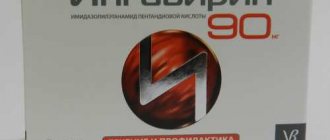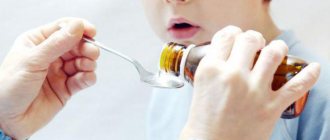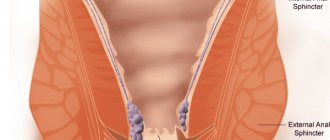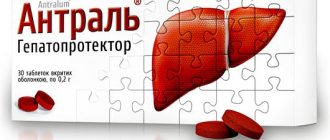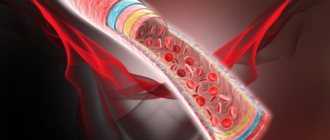Write a review
Reviews: 0
Manufacturers: Pharmaceutical Factory of St. Petersburg, Akrikhin, NIZHFARM, Dalkhimfarm, Tula Pharmaceutical Factory
Active ingredients
- Chloramphenicol
Disease class
- Not indicated. See instructions
Clinical and pharmacological group
- Not indicated. See instructions
Pharmacological action
- Broad spectrum antibacterial action
- Bacteriostatic
Pharmacological group
- Amphenicols
Compound
active ingredient:
1 g of liniment contains syntomycin 50 mg or 100 mg;
Excipients:
castor oil, emulsifier No. 1, sorbic acid, sodium carboxymethylcellulose, purified water.
Dosage form.
Liniment for external use.
Basic physical and chemical properties:
Liniment is white or white with a yellowish tint, with a weak specific odor.
Pharmacotherapeutic group.
Antibiotics for local use.
ATX code D06AX02.
Indications for use
Liniment
- 2nd and 3rd degree burns;
- trophic ulcers that do not heal for a long time;
- infected wounds in the second phase of the wound process (when there is no necrotic tissue and pus).
Vaginal suppositories
- vaginitis, cervicitis and other bacterial infections of the pelvic organs caused by microorganisms sensitive to syntomycin;
- prevention of purulent-inflammatory infections in gynecology (before and after the procedure for installing an intrauterine device, before gynecological operations and abortions).
Pharmacological properties
Pharmacodynamics.
Broad-spectrum antibiotic. The drug is active against strains of bacteria resistant to penicillin, streptomycin, sulfonamides; gram-positive (Staphylococcus spp., Streptococcus spp.)
and gram-negative cocci
(Neisseria gonorrhoeae, Neisseria meningitidis)
, many bacteria
(Escherichia coli, Haemophilus influenzae, Salmonella spp., Shigella spp., Klebsiella spp., Serratia spp., Proteus stuartii
, Yersinia), rickettsia, spirochetes, pathogens of trachoma, psittacosis , inguinal lymphogranulomatosis and others, has antimicrobial and antibacterial (bacteriostatic) effects. The mechanism of action is associated with a violation of the synthesis of microbial proteins. Resistance of microorganisms to synthomycin develops relatively slowly.
Pharmacokinetics.
When used externally, it penetrates well into body tissues and fluids. It is excreted mainly in the urine in the form of inactive metabolites, and partially in bile and feces.
Clinical characteristics.
Safety
It is extremely toxic and often leaves severe side effects when administered orally[4]. In this regard, it is practically not used and is recommended only in the absence of alternatives for the treatment of serious infections [5]. The most dangerous (almost fatal) complication of chloramphenicol use is irreversible aplastic anemia[6]. The incidence of aplastic anemia due to oral or intravenous use of chloramphenicol was estimated to be one in 6,000 prescriptions by Swedish investigators and one in 21,000 to 45,000 uses in the California group[6]. It is believed that topical use is associated with a much lower risk of developing aplastic anemia and therefore there are proposals to return to the use of chloramphenicol in ophthalmic practice[7], despite the low, but not zero risk of complications.
Special Security Measures
Before using the drug, wash the affected area with soap and water and dry thoroughly. You should not use the drug more often or for longer than prescribed. If the condition does not improve within 1 week, you should consult a doctor.
The use of antibacterial agents for external use can lead to skin sensitization, which is accompanied by the development of hypersensitivity reactions the next time these drugs are used externally or in systemic dosage form.
Interaction with other drugs and other types of interactions.
Simultaneous use of the drug with erythromycin, oleandomycin, nystatin and levorin increases the antibacterial activity of liniment, and with benzylpenicillin salts it reduces it. The drug is incompatible with cytostatics, sulfonamides, biphenyl, barbiturates, pyrazolone derivatives and alcohol.
Liniment Synthomycin
Instructions for medical use of the drug
Description of pharmacological action
It is a mixture of right- and left-handed isomers of chloramphenicol. The use of syntomycin may be accompanied by the same complications that are observed during treatment with chloramphenicol; in addition, changes in the nervous system were noted in the form of agitation, feelings of fear and other disorders. In this regard, the drug is not prescribed orally, but is used only externally in the form of liniments and other dosage forms.
Indications for use
Typhoid fever, paratyphoid fever, generalized form of salmonellosis, yersiniosis, brucellosis, tularemia, meningitis, rickettsiosis, chlamydia, psittacosis, trachoma, etc. For infectious processes of other etiologies caused by pathogens sensitive to chloramphenicol, it is used in case of ineffectiveness of other chemotherapeutic agents or their intolerance. Externally - in surgery and combustiology for the treatment of purulent wounds, trophic ulcers, bedsores and infected burns in the 1st phase of the wound process, in dermatology for the treatment of acne (acne), pyoderma (purulent-inflammatory skin diseases) and microbial eczema accompanied by purulent exudation. In gynecology - for purulent-inflammatory diseases of the female genital organs.
Release form
liniment 10%; aluminum tube 25 g cardboard pack 1. liniment 10%; dark glass jar (jar) 800 g paper 1. liniment 10%; dark glass jar (jar) 1000 g paper 1. liniment 10%; aluminum tube 25 g cardboard pack 1. liniment 10%; dark glass jar (jar) 25 g cardboard pack 1. liniment 10%; dark glass jar (jar) 25 g cardboard pack 1. liniment 10%; aluminum tube 25 g cardboard pack 1. liniment 10%; aluminum tube 35 g cardboard pack 1. liniment 10%; aluminum tube 25 g cardboard pack 1. liniment 10%; aluminum tube 25 g cardboard pack 1. liniment 10%; dark glass jar (jar) 40 g cardboard pack 1. liniment 10%; dark glass jar (jar) 50 g cardboard pack 1. liniment 10%; dark glass jar (jar) 800 g wrapping paper 1 cardboard box (box) 1. liniment 10%; dark glass jar (jar) 1800 g wrapping paper 1 cardboard box (box) 1. liniment 10%; aluminum tube 25 g cardboard pack 1. liniment 10%; aluminum tube 35 g cardboard pack 1. liniment 10%; jar (jar) of dark glass 25 g. liniment 10%; dark glass jar (jar) 25 g cardboard pack 1. liniment 10%; aluminum tube 25 g cardboard pack 1. liniment 10%; dark glass jar (jar) 40 g cardboard pack 1. liniment 10%; dark glass jar (jar) 50 g cardboard pack 1. liniment 10%; dark glass jar (jar) 800 g wrapping paper 1 cardboard box (box) 1. liniment 10%; dark glass jar (jar) 1800 g wrapping paper 1 cardboard box (box) 1.
Directions for use and doses
Externally. After surgical treatment of wounds and burns, synthomycin liniment is applied directly to the wound surface, after which a sterile gauze bandage is applied, and synthomycin liniment is applied to the dressing material and then to the wound. Tampons with liniment are loosely filled into the cavities of purulent wounds after their surgical treatment, and gauze turundas with synthomycin liniment are inserted into the fistulous tracts. When treating wounds and burns in phase 2—1 time every 1–3 days, depending on the dynamics of wound healing.
Storage conditions
List B.: In a dry place, at a temperature not exceeding 20 °C.
Best before date
24 months
ATX classification:
D Dermatotropic drugs
D06 Antimicrobials for the treatment of skin diseases
D06A Antibiotics for external use
D06AX Other antibiotics for external use
D06AX02 Chloramphenicol
Application Features
Use during pregnancy or breastfeeding.
Syntomycin crosses the placenta. However, studies have not revealed any adverse effects of synthomycin on the fetus in humans when applied externally. During pregnancy, use the drug taking into account the benefits/risks for the mother/fetus.
It is not known whether the drug passes into breast milk. However, no complications have been recorded in humans, so the use of Syntomycin during the treatment of cracked nipples in women in labor does not require cessation of breastfeeding. Before feeding the child, it is necessary to remove the remaining drug from the nipple and the skin around it with a clean napkin, and wash the mammary gland thoroughly and carefully.
The ability to influence the reaction rate when driving vehicles or other mechanisms.
Does not affect.
Similar drugs:
- Nevigramon Capsule
- Pyrithion zinc Substance-powder
- Cinocap Cream for external use
- Klacid Oral tablets
- Faringosept Lozenges
- Doxycycline Lyophilisate for solution for injection
- Riodoxol ointment Ointment for external use
- Benzamycin Gel for external use
- Alpisarin ointment Ointment for external use
- Meropenem Semi-finished powder
** The Drug Directory is intended for informational purposes only. For more complete information, please refer to the manufacturer's instructions. Do not self-medicate; Before starting to use Syntomycin, you should consult a doctor. EUROLAB is not responsible for the consequences caused by the use of information posted on the portal. Any information on the site does not replace medical advice and cannot serve as a guarantee of the positive effect of the drug.
Are you interested in the drug Syntomycin? Do you want to know more detailed information or do you need a doctor's examination? Or do you need an inspection? You can make an appointment with a doctor - the Euro lab is always at your service! The best doctors will examine you, advise you, provide the necessary assistance and make a diagnosis. You can also call a doctor at home . Euro lab clinic is open for you around the clock.
** Attention! The information presented in this medication guide is intended for medical professionals and should not be used as a basis for self-medication. The description of the drug Sintomycin is provided for informational purposes and is not intended for prescribing treatment without the participation of a doctor. Patients need to consult a specialist!
If you are interested in any other drugs and medications, their descriptions and instructions for use, information about the composition and form of release, indications for use and side effects, methods of use, prices and reviews of drugs, or you have any other questions and suggestions - write to us, we will definitely try to help you.
Contraindications
- inhibition of hematopoiesis in the bone marrow;
- insufficiency of kidney and/or liver function;
- acute intermittent porphyria;
- fungal diseases of the skin or vagina;
- deficiency of glucose-6-phosphate dehydrogenase;
- infected wounds in the first phase of the wound process (for Syntomycin in the form of liniment);
- period of pregnancy and lactation (for Syntomycin in the form of liniment);
- children up to four weeks of age (for Syntomycin in the form of liniment);
- childhood and adolescence before puberty (for Syntomycin in the form of suppositories);
- increased individual sensitivity to any of the components of the drug.
Liniment syntomycin is prescribed with caution in early childhood and in patients who have previously received treatment with cytostatic drugs or have undergone radiation therapy.
Side effects
Disturbances may occur during therapy:
- Allergic reactions: angioedema, skin rash;
- Hematopoietic organs: rarely - thrombocytopenia, leukopenia, reticulocytopenia, granulocytopenia, aplastic anemia, erythropenia, agranulocytosis.
When using Syntomycin in the form of suppositories, the following side effects may develop:
- Vaginal dysbiosis;
- Suppression of normal microflora;
- Irritation or burning of the penis in a sexual partner;
- Hyperemia or burning pain in the mucous membrane of the external genitalia;
- Frequent urination or burning sensation when urinating;
- Itching;
- Inhibition of hematopoiesis;
- Dyspepsia;
- Dermatitis;
- Secondary fungal infection.
If any of these side effects worsen, or any other disorders not listed in the instructions develop, you should consult a doctor.
